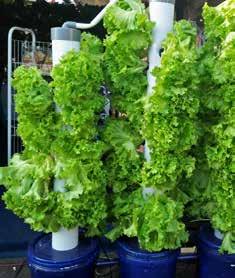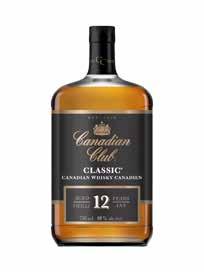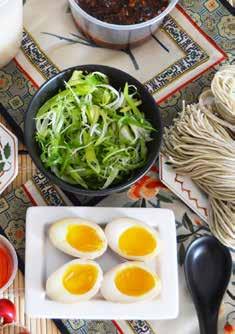
7 minute read
What’s In Store for 2021
Food Trends What’s In Store for 2021
BY LINDA GARSON
Advertisement
Now that 2020 – normally associated with sharp vision – is behind us, we’re looking forward to a year when everyone can move forward with the plans they had to put on hold, and see those new ideas and innovations emerge.
But last year proved how easy it is to be sideswiped, and “pivot” became our most overused word, so our crystal ball is a little cloudy. However, we’re confident of our predictions below, having carefully watched and tracked the events and happenings of last year, and it’s this that guides the direction of our content, and the articles and features you can expect to read in Culinaire this year. The future of dining:
Restaurants took such a hit last year that we’d expect new menus to be pared back, with tighter inventories of ingredients and rolling specials to control food costs, and hand in hand with that, running even smaller inventories on wine lists and back bars.
We’re feeling bad for laundry companies too, as we’ve pretty much seen the last of restaurant tablecloths. It’s casual all the way now - fast casual, upscale casual, family dining, with or without reservations. It doesn’t mean that the food is dumbed down, but there may not be as many opportunities to wear your tux or fancy frock. It’s just as well, and will save on the dry cleaning bill, as we’re eating a lot more with our hands:
Pizza, pizza, pizza
Ten new pizza restaurants opened just in Calgary in the last four months, so we really hope you’re still craving pie. Toppings and names are getting more creative; no guesses what’s on top for Mort & Mindy from High Dough, LovePIzza’s Holy Shiitake, and Noble Pie’s Sweet Cheesus! Watch out for cultures merging too in pizzaland, like Jin Bar’s crazy good Korean toppings.


Taco everything!
If it isn’t pizza, then it’s tacos. And we’re lucky to have some excellent choices for where to get them. Found on menus in all types of eateries, from take out to taquerias with hand-pressed tortillas, tacos are here to stay and increasing in popularity. Always good for a happy hour deal too!
And where there’s such a popular food item, chefs will get creative and cultures cross, and we’ll see more menu items such as Gringo Street’s Thai Coconut Braised Short Rib tacos, and Peking Duck tacos.
Fried chicken
Almost ubiquitous, fried chicken has reached cult status - on its own, in a bun as a burger or sandwich (or a sando), from the south or the east, and from a wide variety of cultures where it has different names. We’re all going to know the difference between our katsu and our karaage, our huraideu-chicken and our spicy yangnyeom chicken, our buttermilk-brined and our beerbattered chicken! More plant-based
Predicted as a trend last year, vegetarian, vegan, and plant-based food has only increased in popularity, and it’s not going anywhere in a hurry. We’re questioning the supply system, meat-packing, and the way animals are treated, and as a result there are incredibly good alternatives available in stores as well as new veggie and vegan dine-in and take-out restaurants popping up. Local, local, local…
Local produce on a menu used to be a big selling point, but now it’s de rigeur. It’s expected, and if a restaurant can’t name the farm their beef or pork comes from, customers will be asking questions…
Farm to table and farm to fork are the norm, and we’re holding those to account that aren’t supporting local,

and asking “why not?” Agro-tourism
To satisfy the increased interest in local produce and farming, watch for more farmers to open their doors to us to tour round and see for ourselves how our cheese and sausages are made, our veggies are grown, and where the chickens live.
Let’s hope we’re able to roam free ourselves in summer to visit more farms in August for Alberta Open Farm Days! Ethics-based eating
We’re becoming more value-based, and looking at environmental impact, social justice, inclusiveness, and diversity in the food industry. Trust is becoming more important; we trust farmers but not farming, and we’re asking questions about the way farm workers are treated.
One result of value-based eating, coupled with wanting to know where our food comes from and a desire to support local businesses, is that more farmers are partnering with butchers shops, and have set up online ordering websites to sell directly to us - even delivering it themselves.


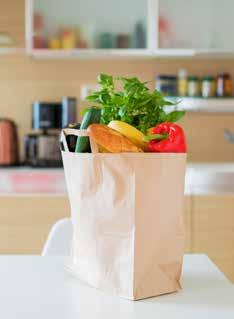
Online shopping
And while we’re talking about online shopping, we’re very pleasantly surprised how good the produce is! It was always a worry that our apples will be bruised, the celery will be limp, and our avocados mushy, but stores know we won’t be coming back unless our produce is as good as if we’d chosen it with our own hands.
Online shopping can only grow, especially when you think that supermarkets haven’t changed a whole lot in the last 80-100 years – they’re unfashionably car- and real estatecentric. Now technology has made it possible for us to click on a recipe without making a shopping list, and all the ingredients miraculously turn up on our doorstep!
Still popular
Some menu items seem to be timeless and never go out of fashion: • Roast carrots of all colours are still appearing with everything, and also on their own too as a starter. • Are there any restaurants that don’t have a beet salad (with or without goat cheese) on the menu? • Donuts are always in fashion; sometimes trendy, sometimes outrageously coated, and more recently appearing as savoury versions made from potato (have you tried Vendome’s smoked salmon donuts?), and as a bun filled with cheese (don’t miss Orchard Restaurant’s cheese-stuffed garlic bread and Soleil Bistro’s Beignet Bombs). • Charcuterie – with people eating at home more, we’ve seen a huge growth in businesses offering prepared charcuterie boards, platters, and boxes for us to spoil ourselves while binging on Netflix. • Comfort Food – we’re craving it, at home and in restaurants. We’ve all needed comforting last year, and food is one satisfying way. We go back to the food we grew up with; we want the familiar, whether that’s congee, cheese, chocolate, chicken, or chips (with fish!).
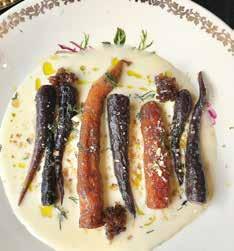
As restaurants staffed down last year, new small businesses sprung up with talented chefs becoming entrepreneurs. We’ve seen a big growth in private chefs and catering companies offering to come to our homes and businesses and cook for us.
Talented home cooks can now sell their specialties directly to the public, advertise, and deliver direct to us too, which wasn’t allowed before. They can’t sell to restaurants but can sell to grocery stores, so we may see small, local businesses’ products on the shelves - look out for them!
Choices of take out meals, dinner packages, boxes, and kits are only set to increase. Try to pick it up rather than have it delivered, and you can eat restaurant-quality food at home every night.
Restaurants themselves are also offering their own branded products as a way for us to have the experience and flavours at home. We’ll see them on grocery store shelves as well as to pick up in the restaurant – many of which are now acting as delis and markets, and selling pantry goods too.
With so many eating at home, food service suppliers have suffered in direct proportion and have now turned to selling to the public as well as to supplying restaurants. That could mean quality food at big savings, delivered to you too, so check them out when you’re planning your grocery list.
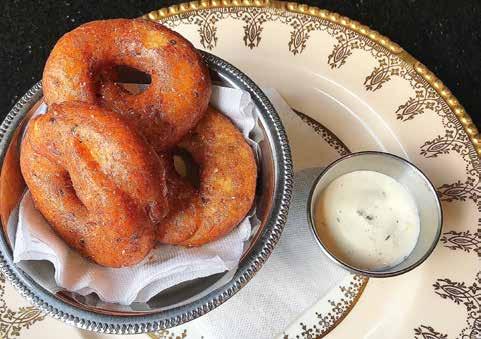
What’s in store?
Legislation is now in place to ban single-use plastic items where there’s evidence showing that they’re found in the environment – one step further in the plan for zero plastic waste by 2030.
By the end of this year, we’ll see compostable grocery bags, alternative straws and stir sticks, compostable cutlery and food containers, as well as environmentally friendly six-pack rings for beer.
And finally, we’re slowly seeing more vertically farmed products available as the demand for local increases. Soil-free growing not only yields much, much more than conventional agriculture, 365 days a year, but as the fruit and veggies are grown indoors it can be in towns and cities, and there’s no need for pesticides, sun, fields, and transport from the countryside to the city.
